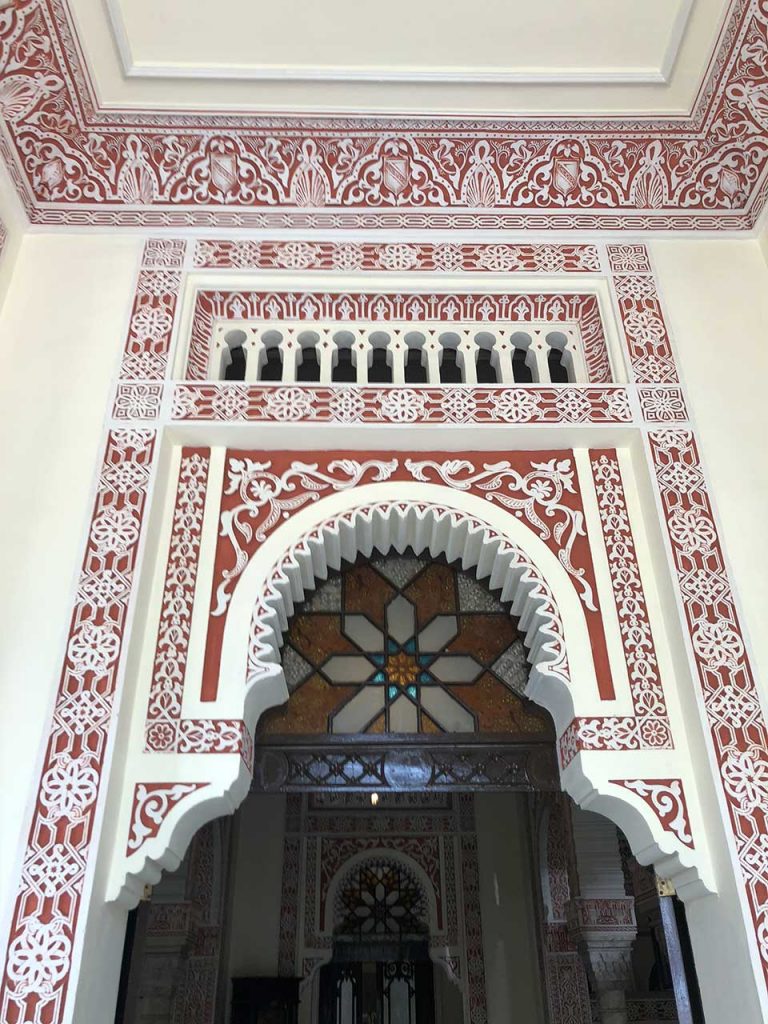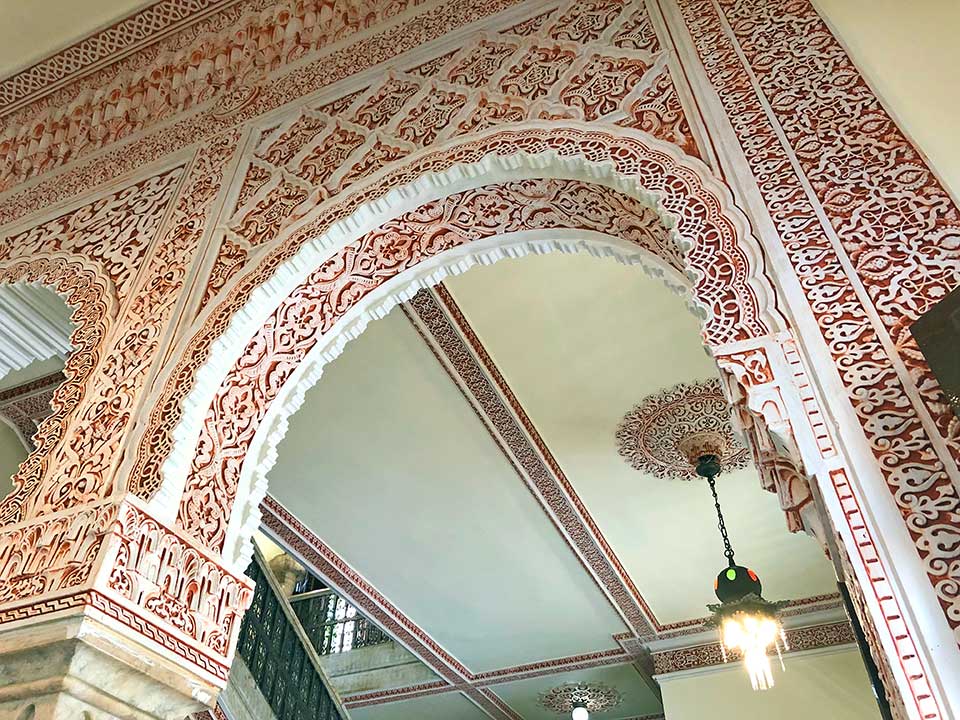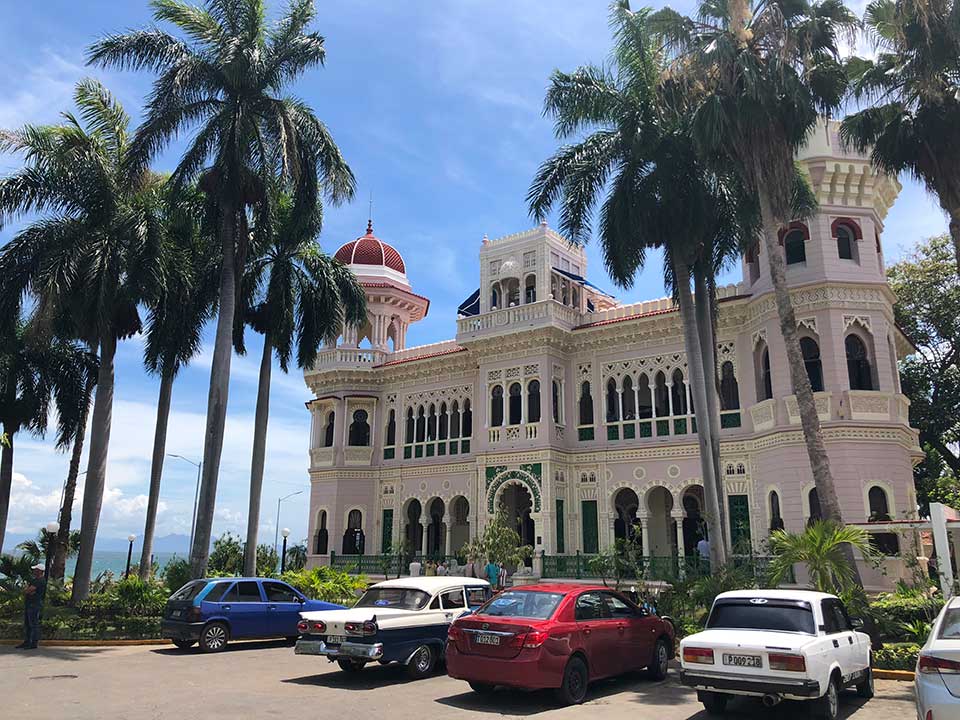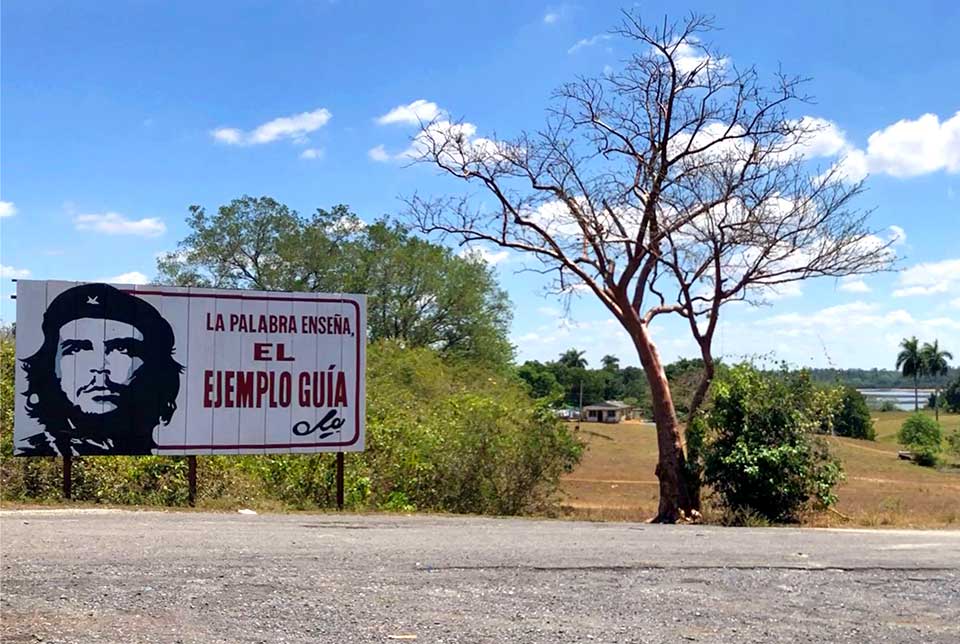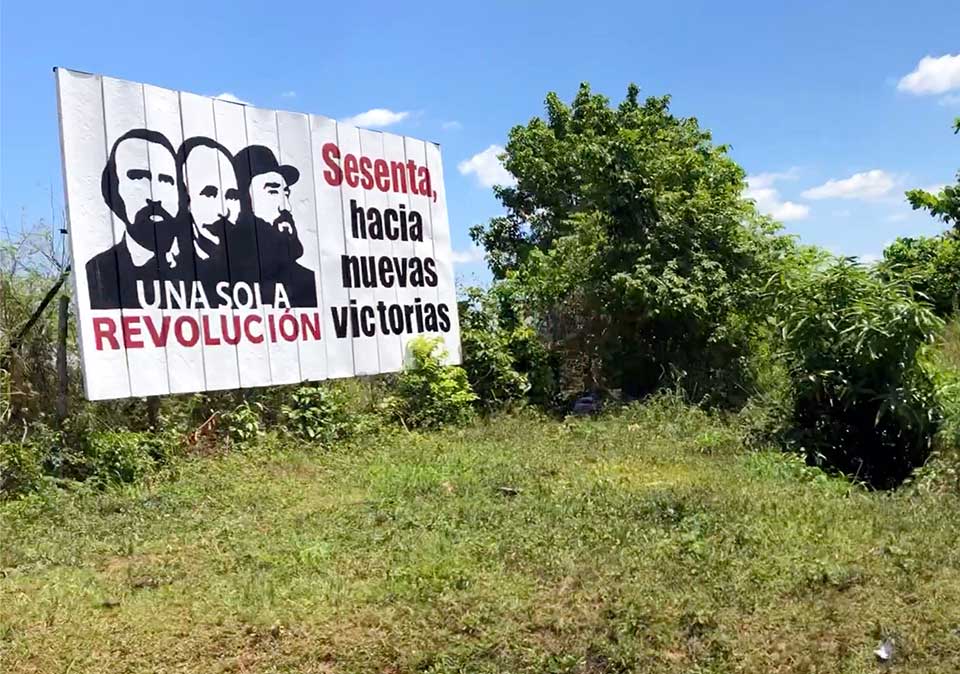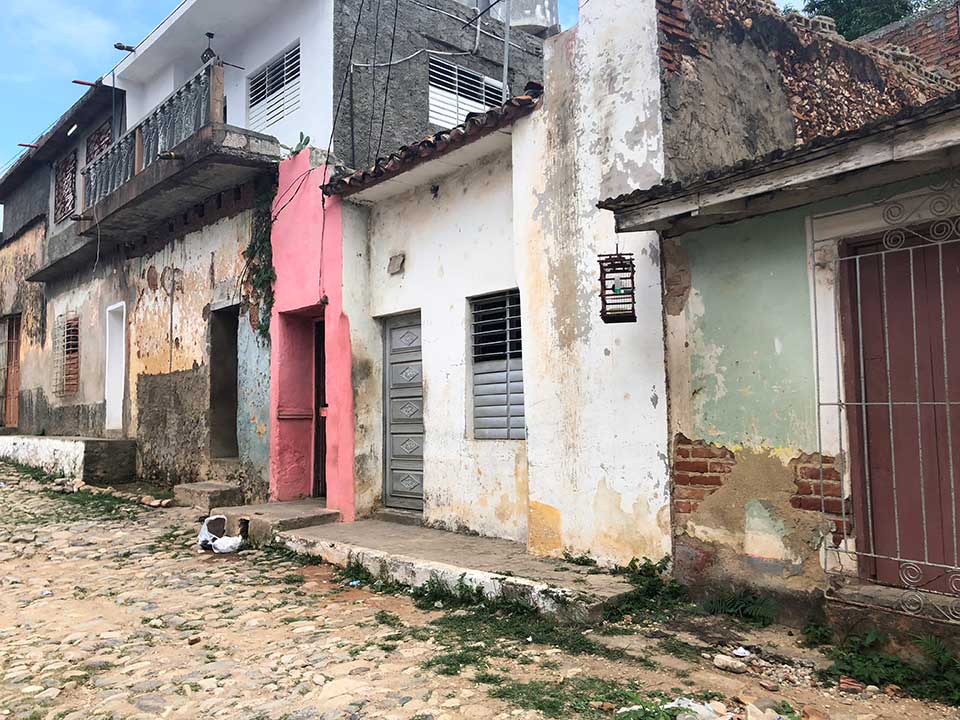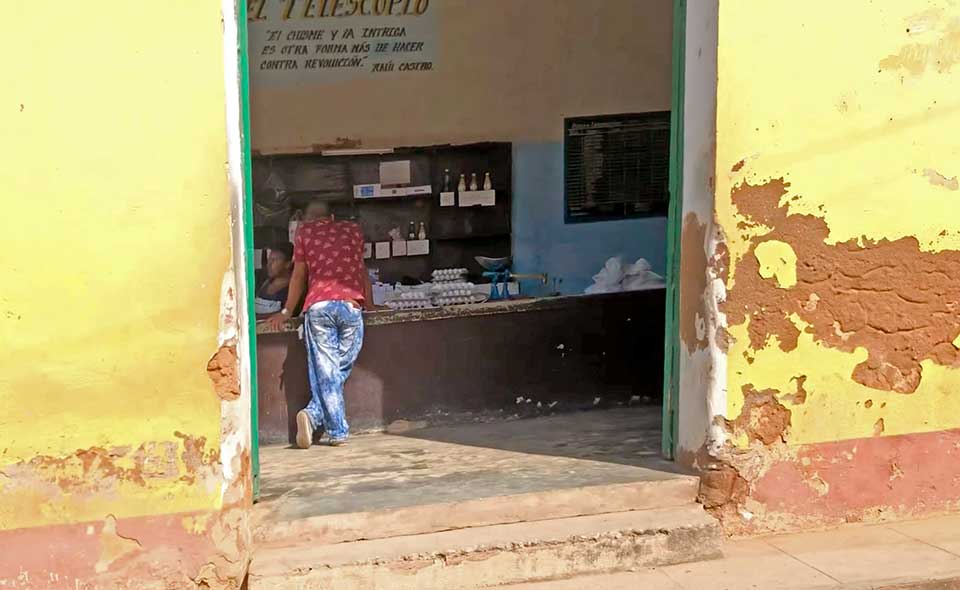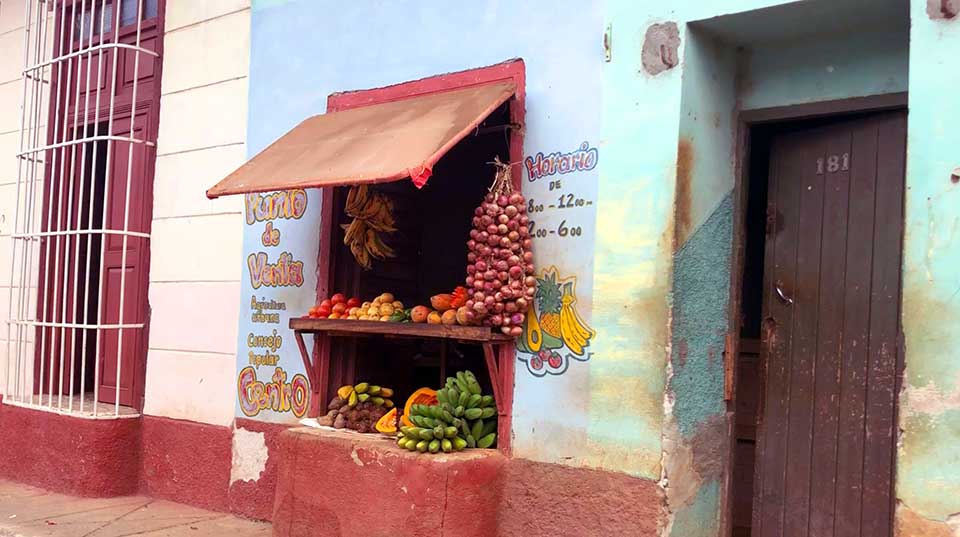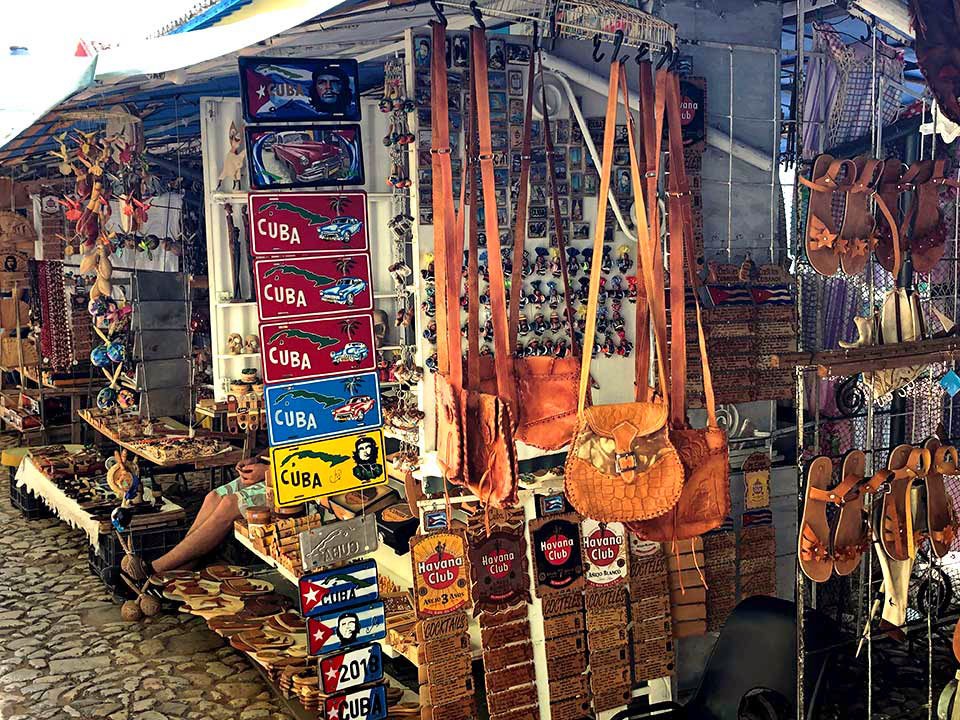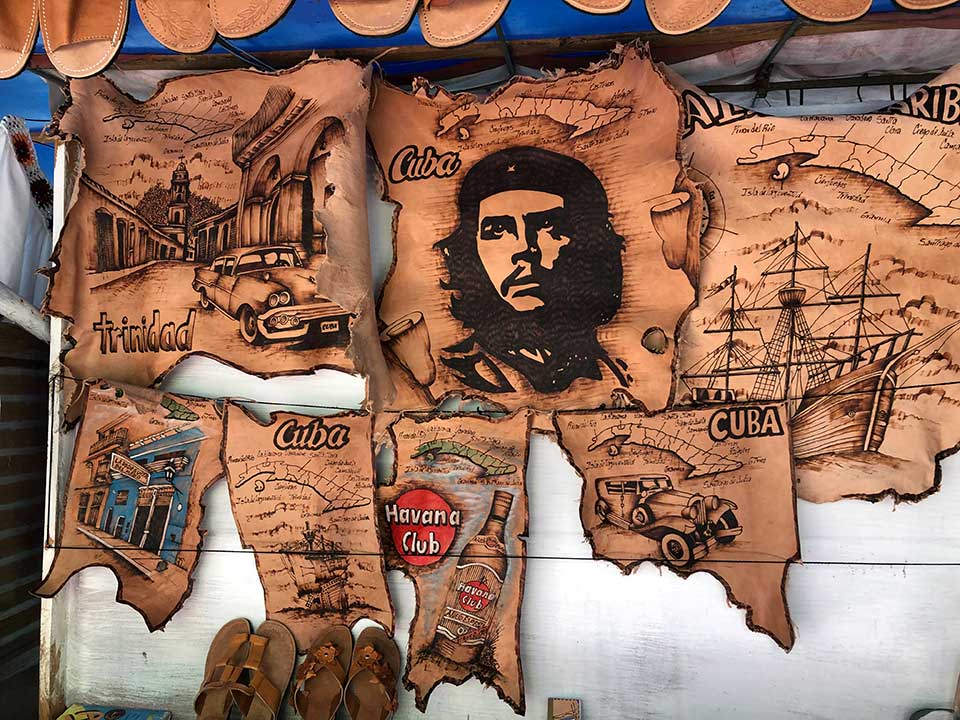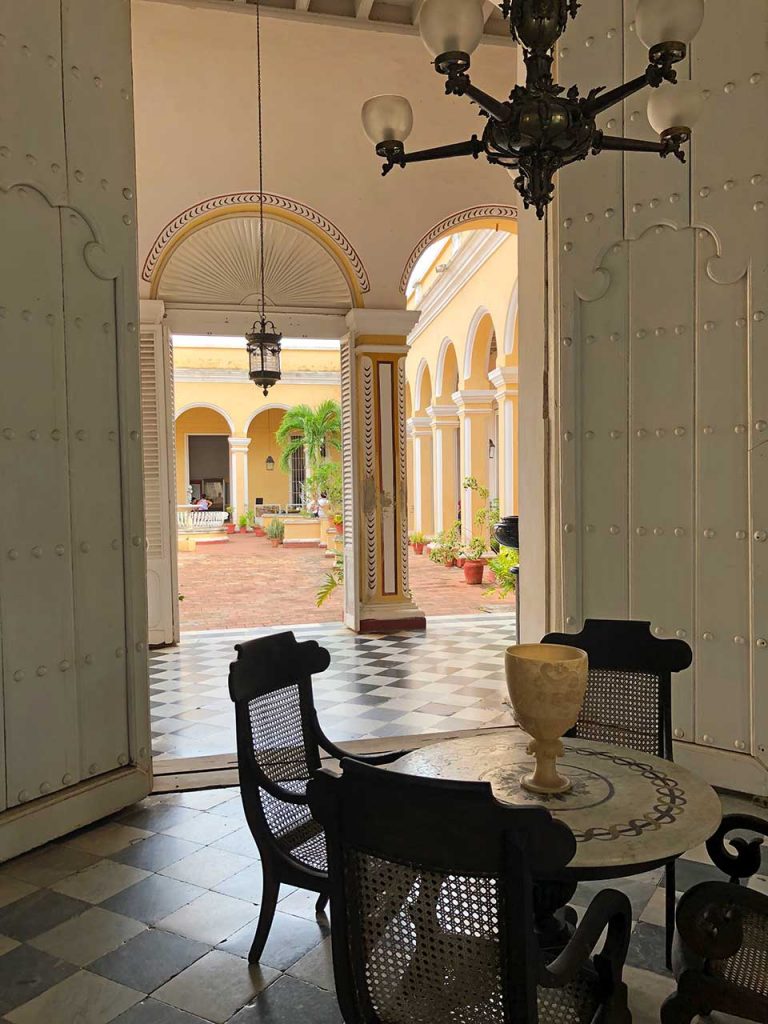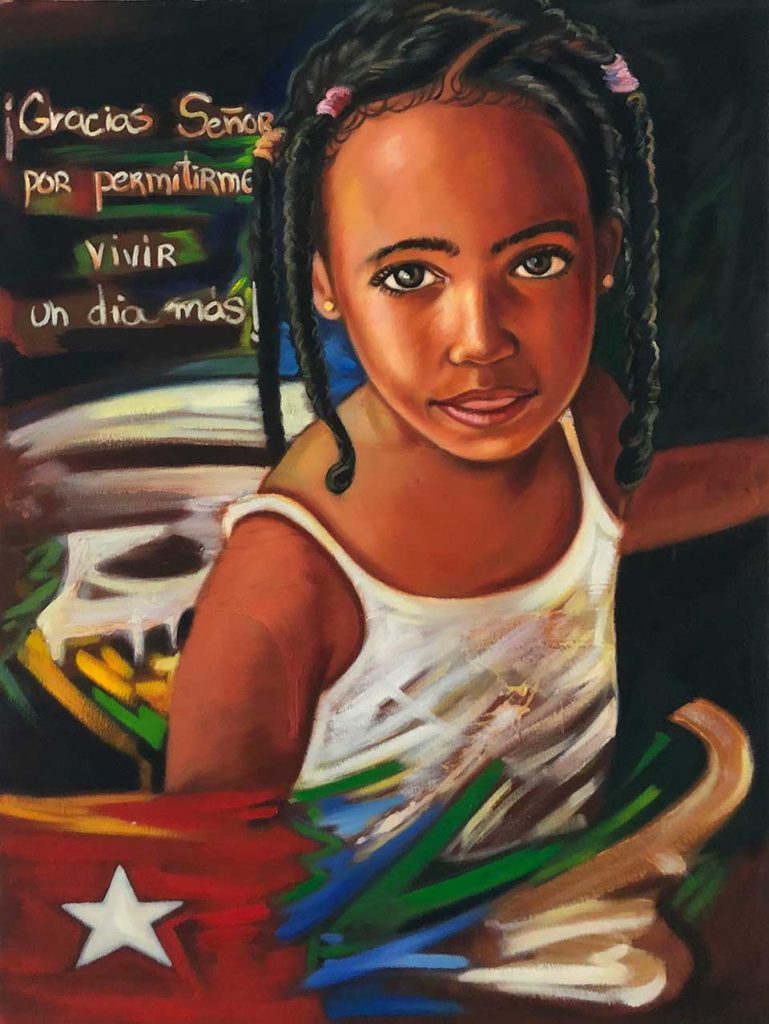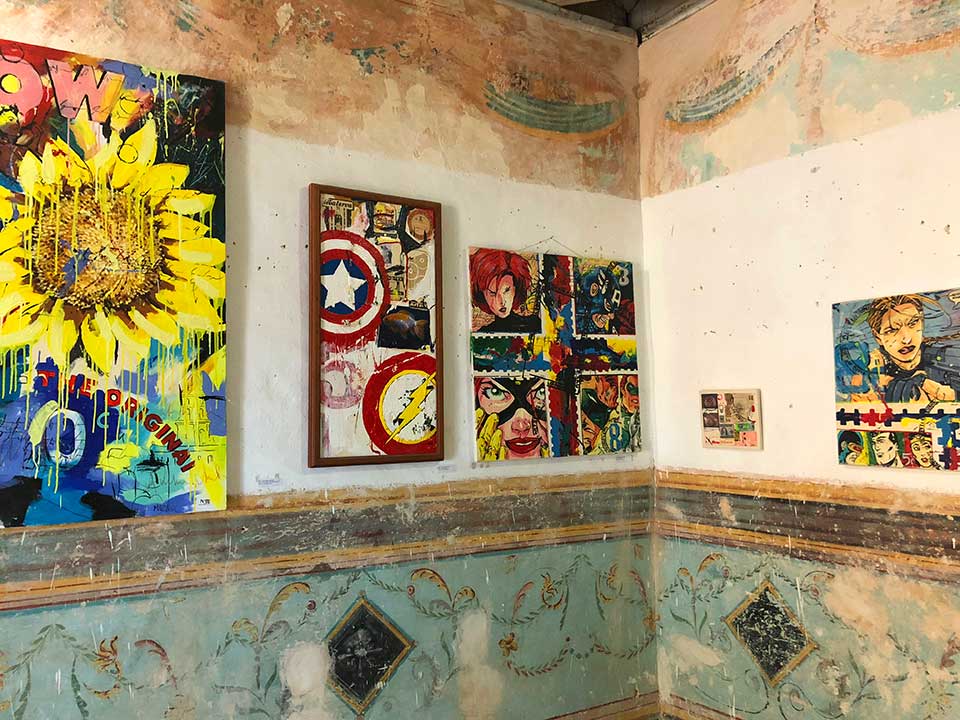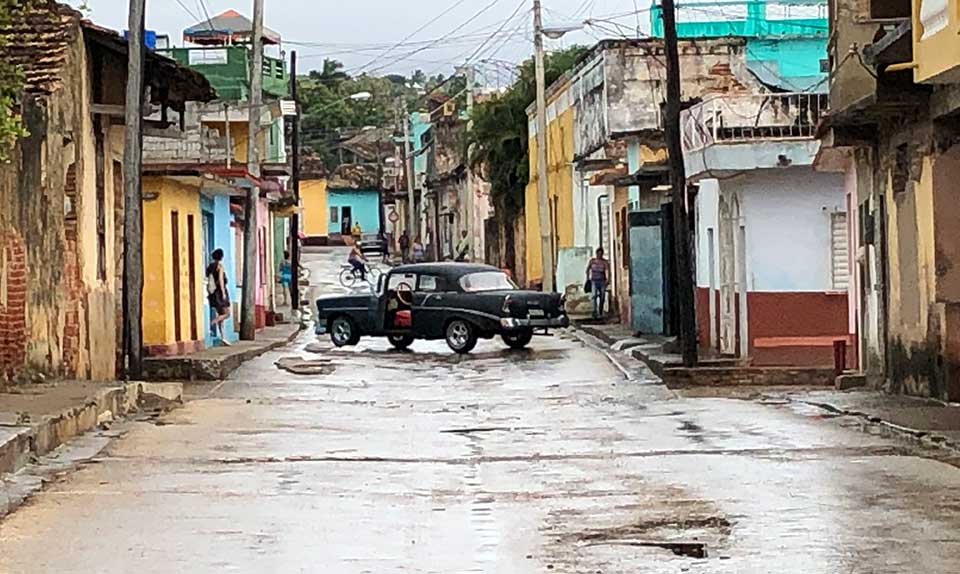
Cuba-Conga! Part 3: Cienfuegos & Trinidad
Having returned our charter sailboat in Cienfuegos (see Cuba Part 2), we were excited for our continued travel adventures in Cuba, which included visiting the historic “Sugar Baron Era” colonial towns of Cienfuegos and Trinidad along the west-central coast of Cuba. (see Cuba Part 1.)
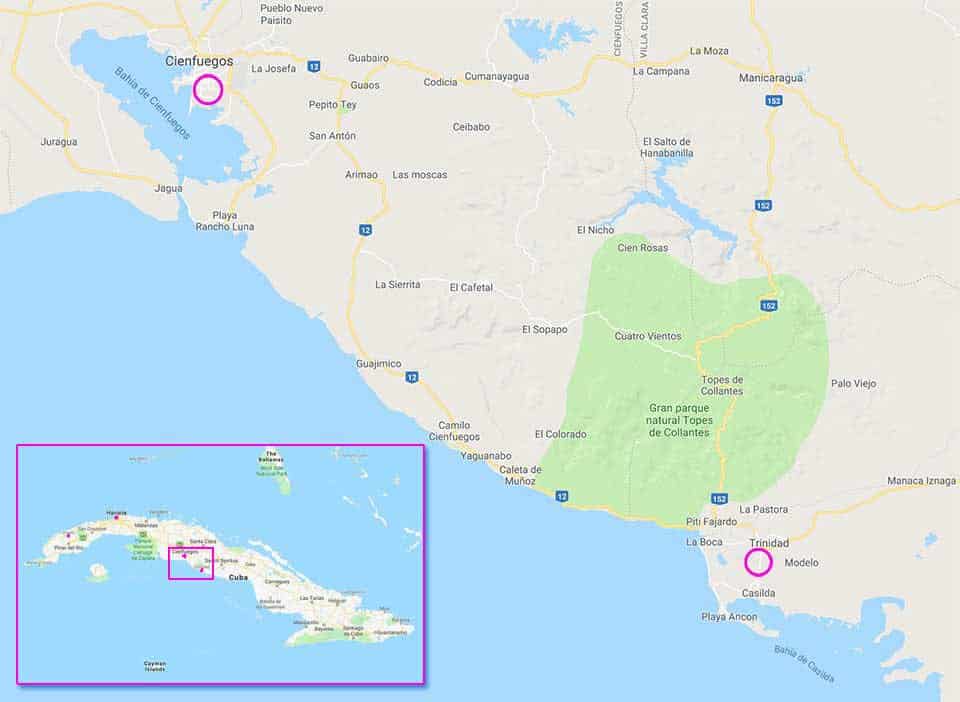
We had pre-arranged for our wonderful tour guide Bel and taxi-driver Gustavo (with his taxi-van) to pick us up at the Platten Charter Base. Because of the Cuban law that most Cubans can not be on or near boats (except for fishermen and a few others with special permits), Bel and Gustavo were not allowed to see the boat, or even be on the dock. In fact, just driving into the marina parking lot was kind of a big deal for them.
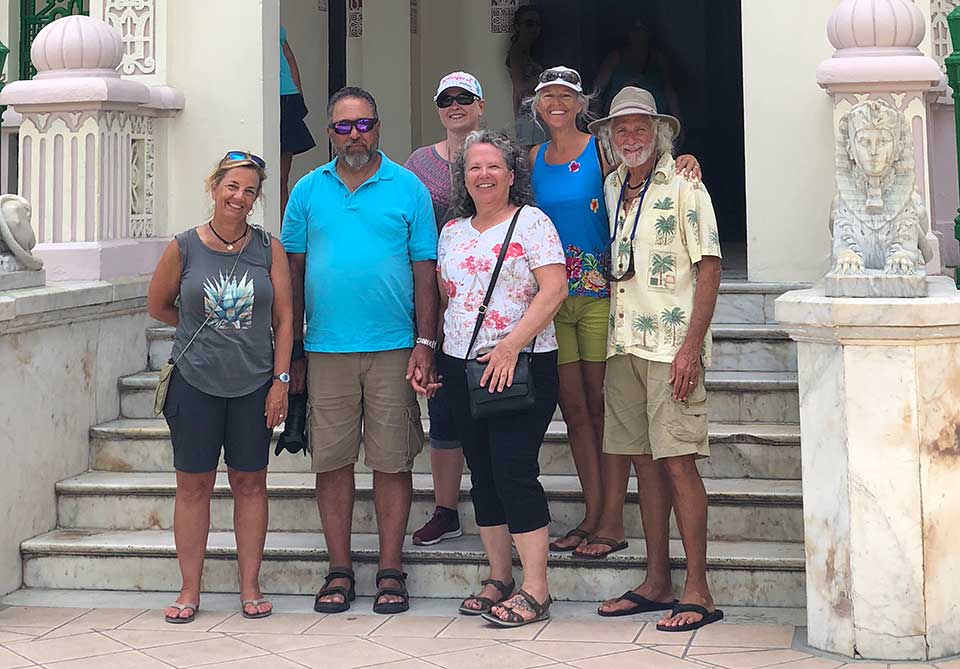
It was so fun to see Bel again! We had missed her cheery smile, laugh, and demeanor and were all excited for her to show us around more of her Caribbean island home. We brought her all of our left-over provisions from the boat. We also ended up with enough left-over bottled water that we stashed under the seats in the taxi-van and had drinking water for the rest of our five-day trip.
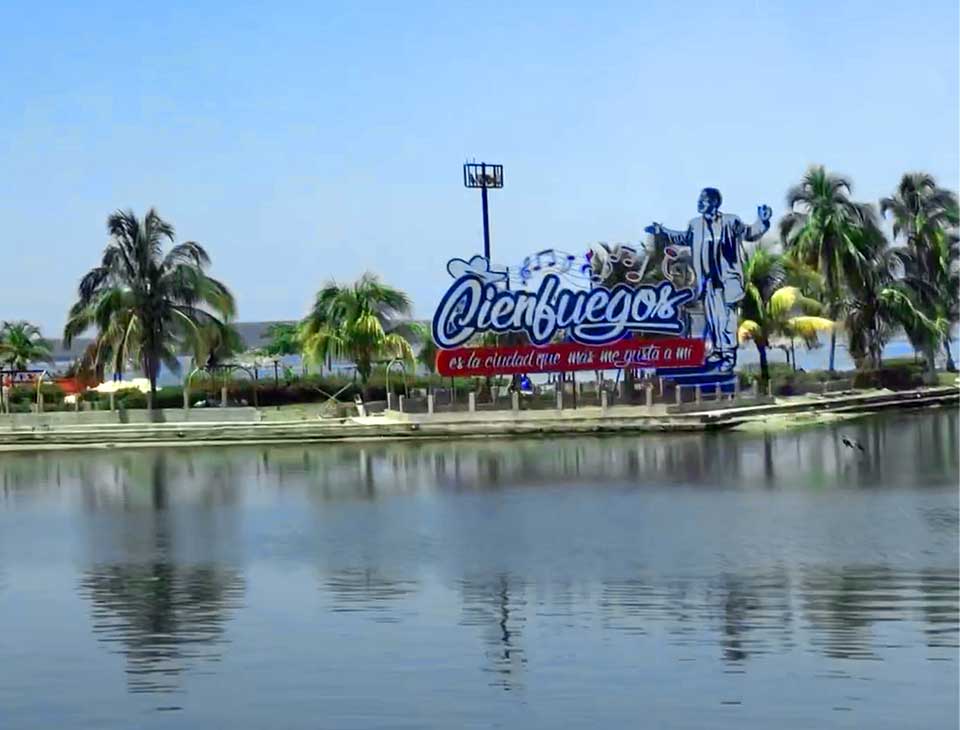
Cienfuegos History
Here’s a little history on Cienfuegos, courtesy of Wikipedia! As you can see on the above map, Cienfuegos is on the central coast of Cuba about 160 mi south of Havana, with a population of 150,000. Cienfuegos literally translates to “one hundred fires”, cien meaning “one hundred”, fuegos meaning “fires”. It was originally settled by Taino indigenous people before French immigrants from Bordeaux and Louisiana arrived in the early 1800’s. Later this colonial city was renamed Cienfuegos for a Spanish Captain-General, José Cienfuegos. However, many of the streets still retain their original French names.
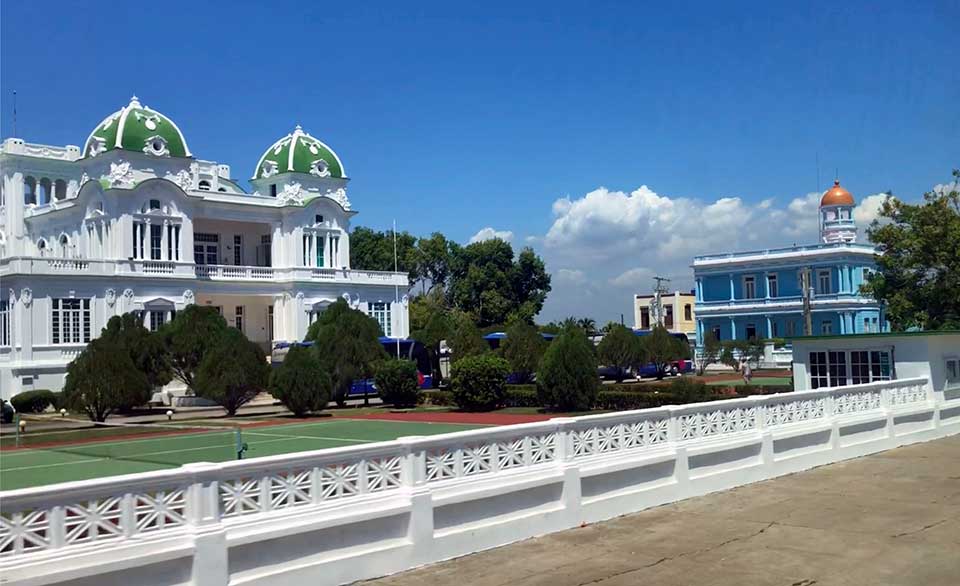
On the trade route between Jamaica and South America, the Port of Cienfuegos was instrumental in the sugar trade. It was also in close proximity to the Cuban provincial capital city of Santa Clara. During the Cuban Revolution, Cienfuegos saw an uprising against Fulgencio Batista and was bombed in retaliation on September 5, 1957. Today Cienfuegos, one of Cuba’s chief seaports, is still the center of the sugar trade as well as the coffee and tobacco trade. In 2005, UNESCO named the Urban Historic Centre of Cienfuegos to the list of World Heritage Sites, as the best example of early 19th century Spanish Enlightenment Urban Planning in the Caribbean.
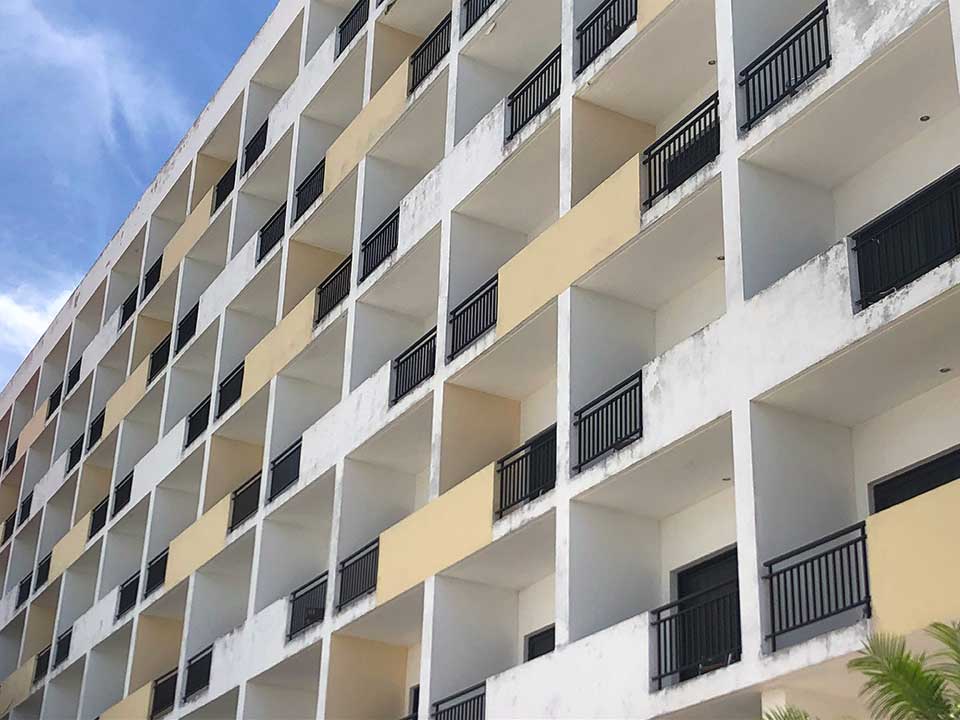
With a stop at the town square to tour the main cathedral and a few other old buildings, we all piled back in the taxi for the 90-minute ride to Trinidad. The taxi van had three bench seats in the back, two of them facing each other. We volunteered to sit in the backward-facing seat as neither of us gets car-sick, so we were always seeing everything go by in the opposite direction.
The scenery was mostly a lot of sugarcane fields, and as we got closer to Trinidad there were also some views of the ocean, as well as shrimp farms. Horse-carts, tractors, bicycles, motorcycles, cars, and trucks all shared the same highway. Though traffic was very light, and Gustavo was an excellent driver, there were a few times that our travel buddies cringed or covered their eyes at close-calls on the highway. We were thankful not to have seen those near-misses with our backward view!
Trinidad History
Trinidad is located about 50 miles south of Cienfuegos (about a 90-minute drive on windy roads). Founded in 1514, it has a current population of around 75,000 and is known for its colonial old town and cobblestone streets. It is also a UNESCO World Heritage site. The neo-baroque main square, Plaza Mayor, is surrounded by many restored grand colonial buildings. These days, Trinidad’s main industry is tobacco processing.
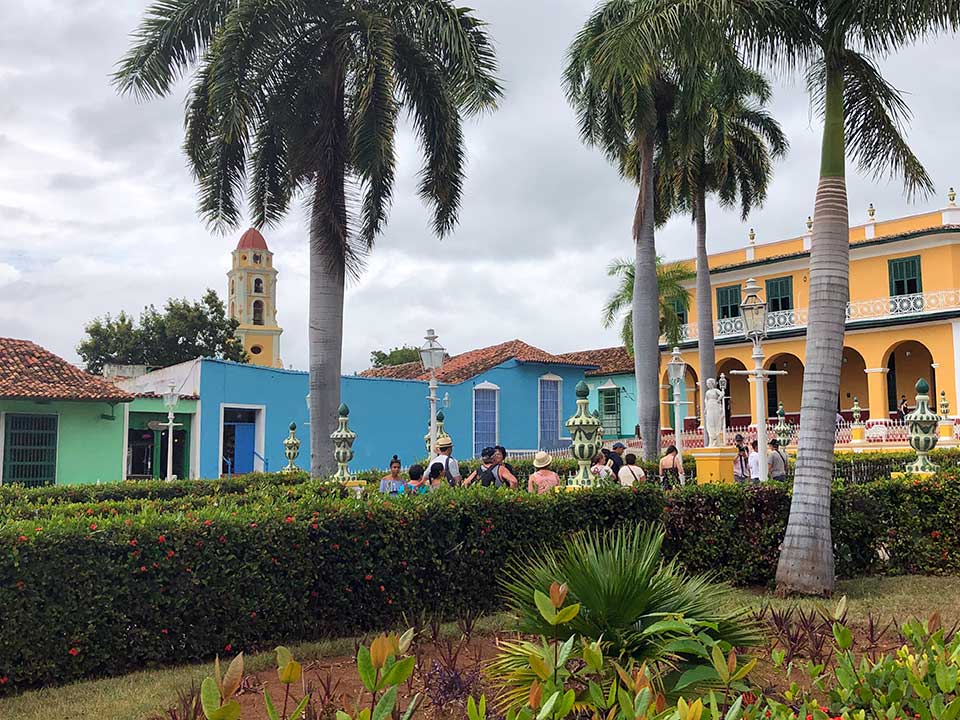
Interestingly, Hernán Cortés, the infamous conqueror of the Aztecs, was a Spanish Captain-General in Trinidad in 1519, just prior to heading to Mexico. He recruited 300 Cuban men and procured 6 ships to sail for what is now Veracruz, Mexico, then marched to Teotihuacan, to conquer Montezuma and the Aztecs.
Another interesting footnote about Trinidad is that they LOVE songbirds, and upwards of 80% of the Trinidadians have songbirds in cages in their homes. We saw many people walking around town carrying their birdcages (with birds inside of them), like we might walk our dog. This article talks more about the Birdcage and Songbird pastime in Trinidad.
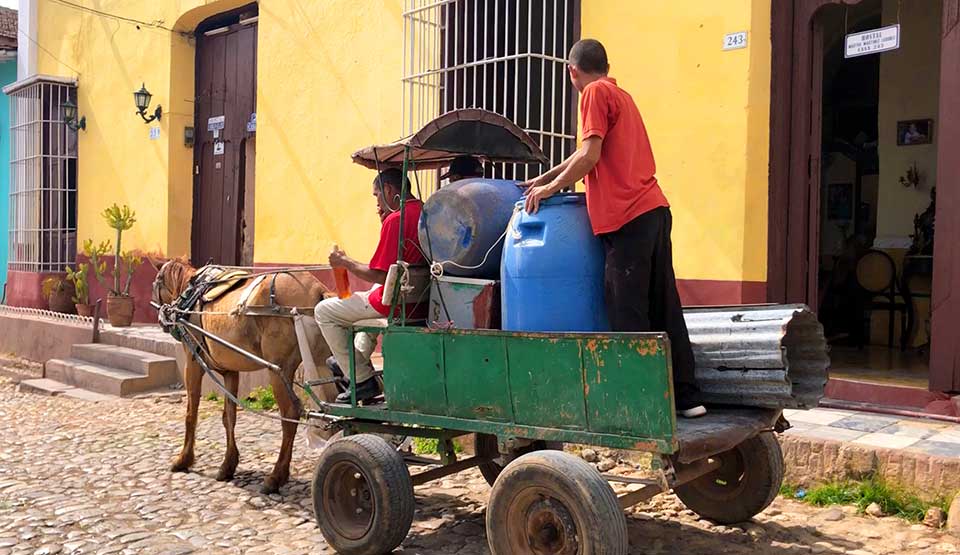
Our first stop in Trinidad was at La Canchanchara Taberna to sample their famous traditional Canchanchara, served in little terracotta pots. This was a popular tourist spot, with a live Cuban band (see short video of Bel teaching Heidi to Cha-Cha-Cha!), and an old man rolling cigars, plus lots of other tourist trinkets to buy in their gift shops, and on the street out in front.
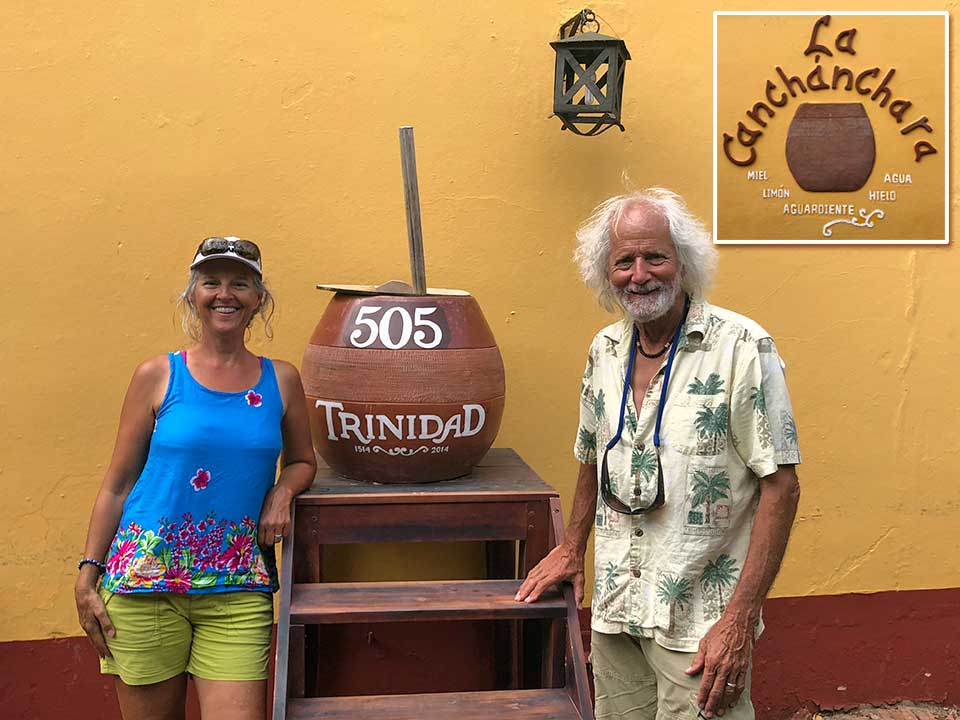
Traditional Canchánchara Recipe
This drink dates back to slavery days. As the story goes, the slaves would drink this sweet drink to give them sustenance for working the sugarcane fields all day long. Rather than rum as we know it today, they would make it with Aguardiente. Aguardiente is a generic term for less-distilled alcoholic beverages that contain between 29% and 60% alcohol, so basically a sugarcane moonshine.
Ingredients
1 tablespoon honey
1 tablespoon hot water
1 tablespoon fresh lime juice
3 ounces dark rum (preferably Havana Club 7!)
Ice
Lime wedge and fresh sugarcane, for garnish (optional)
Directions
Combine 1 tablespoon honey and 1 tablespoon hot water in a highball glass (or terracotta cup!); stir until honey dissolves. Add lime juice and rum. Add ice to fill glass. Stir until chilled. Top with more ice. Garnish with lime wedge and sugarcane, if desired.
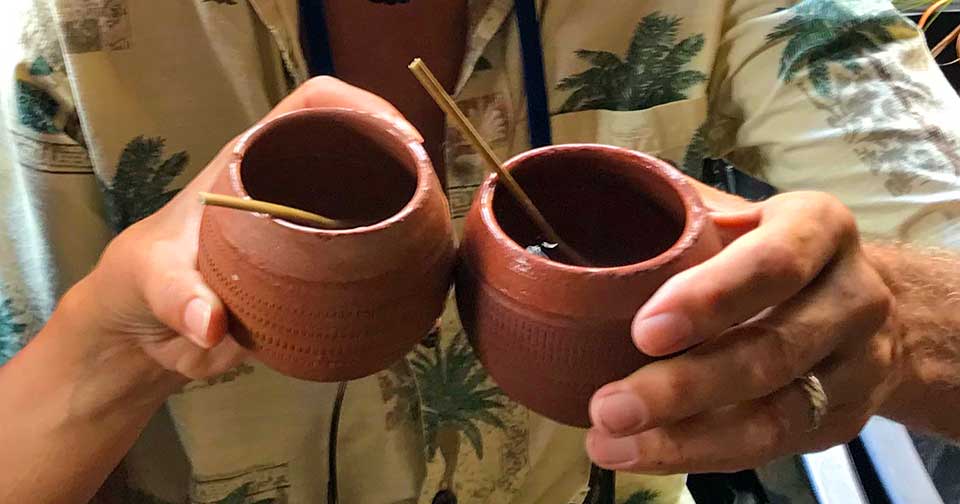
Done with our drinks, dancing lessons, and shopping for trinkets, we headed off to find our casa particular for the night. Bel had arranged for us to stay in two Casas next door to each other.
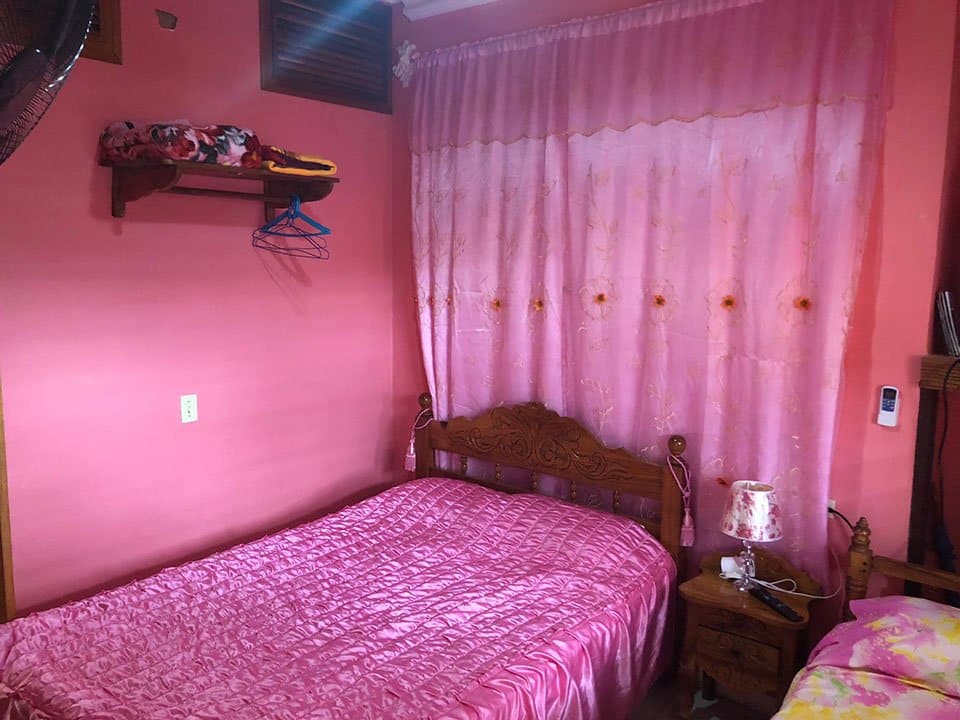
As with the other casas we stayed in, room are typically $30 CUC/night with a full breakfast for an extra $5CUC/ea. We dropped off our bags, and quickly freshened up before heading out to dinner. When Heidi opened up one of our gear bags, she discovered a BIG surprise! Kirk’s PFD (personal flotation device, a.k.a inflatable life jacket), had prematurely inflated! Nearest we can figure, the ‘jerk to inflate’ tab must have gotten caught on something in the bag, and been jerked. Thankfully this occurred after our sailing adventures, so we no longer needed it on this trip.
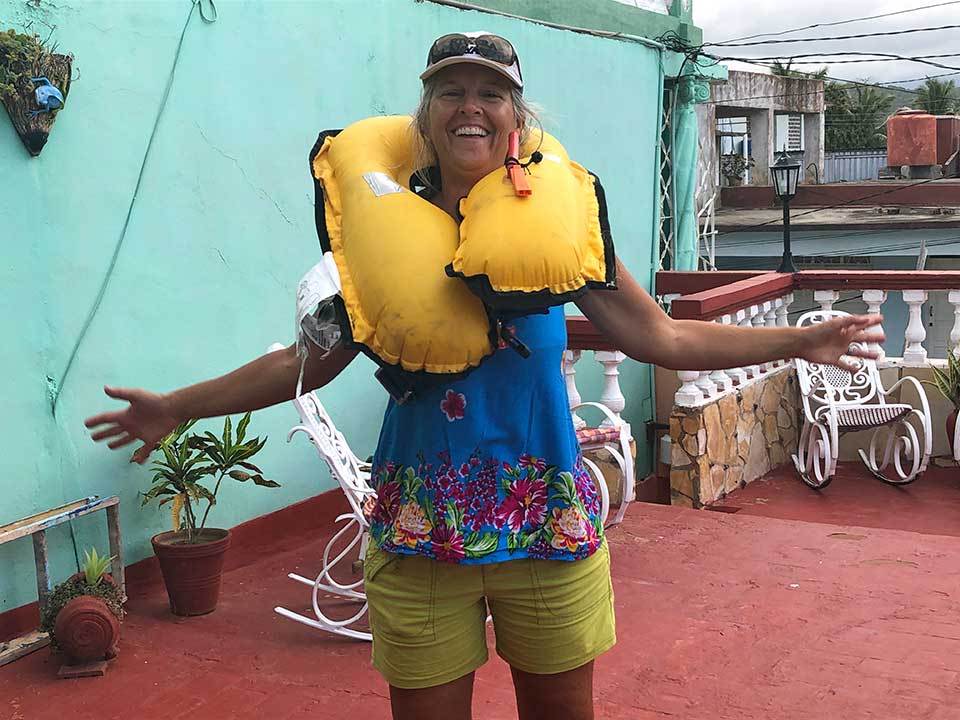
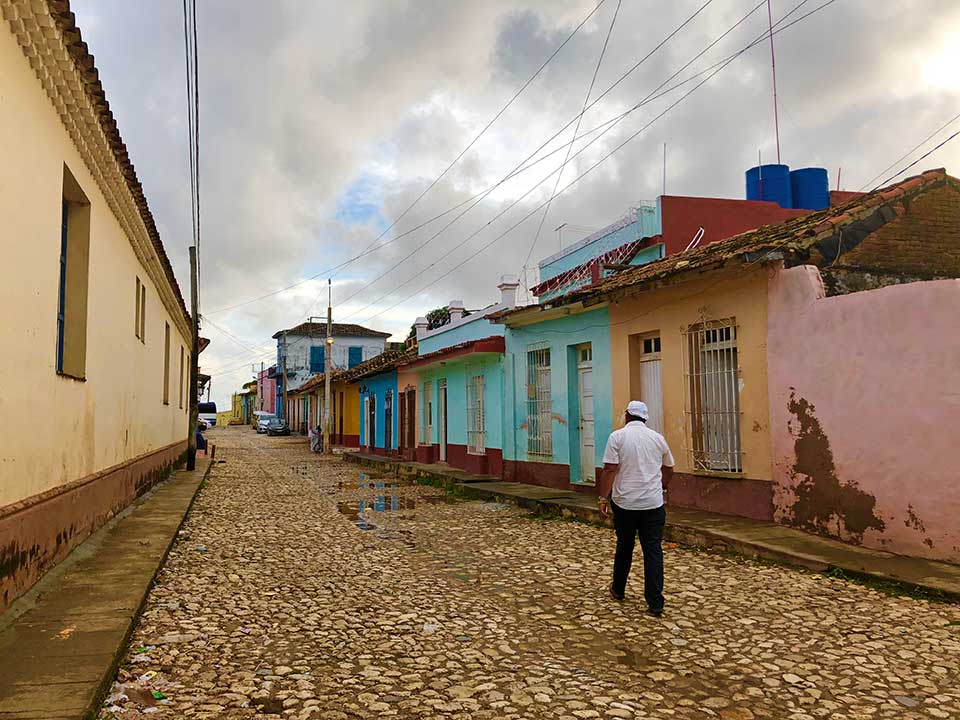
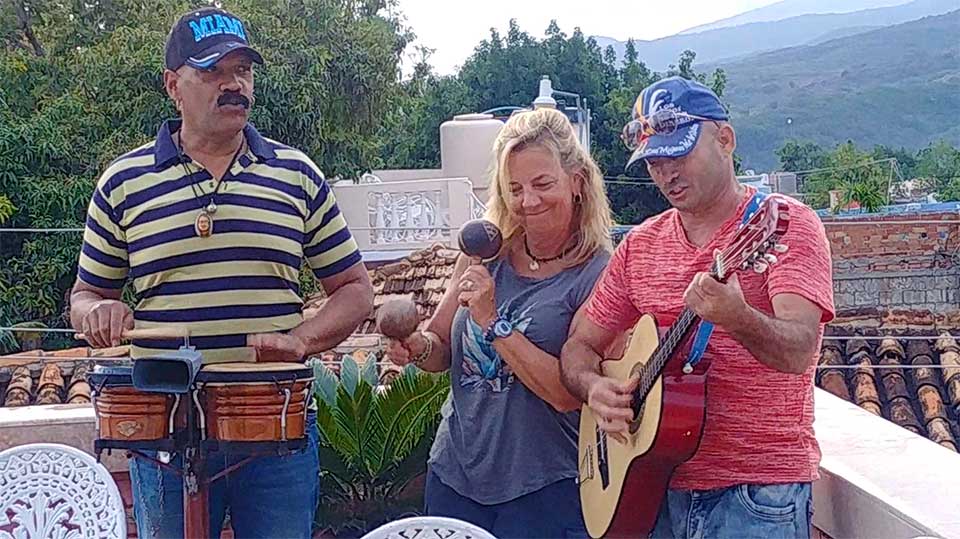
We walked back into town looking for a good place to eat dinner. Remember the limited Wifi from Part 1? No Tripadvisor or UrbanSpoon to guide us here… Gustavo knew of a good restaurant, but when we arrived they were closed. So we picked one nearby… which had super mediocre food, but the music wasn’t half-bad.
We walked around the main square a bit that evening and had planned to take in some live Cuban music, but we were all very tired from our overnight sailing passage only the night before, and the long day touring Cienfuegos and Trinidad, so we soon returned to our Casa Particulares and hit the hay.
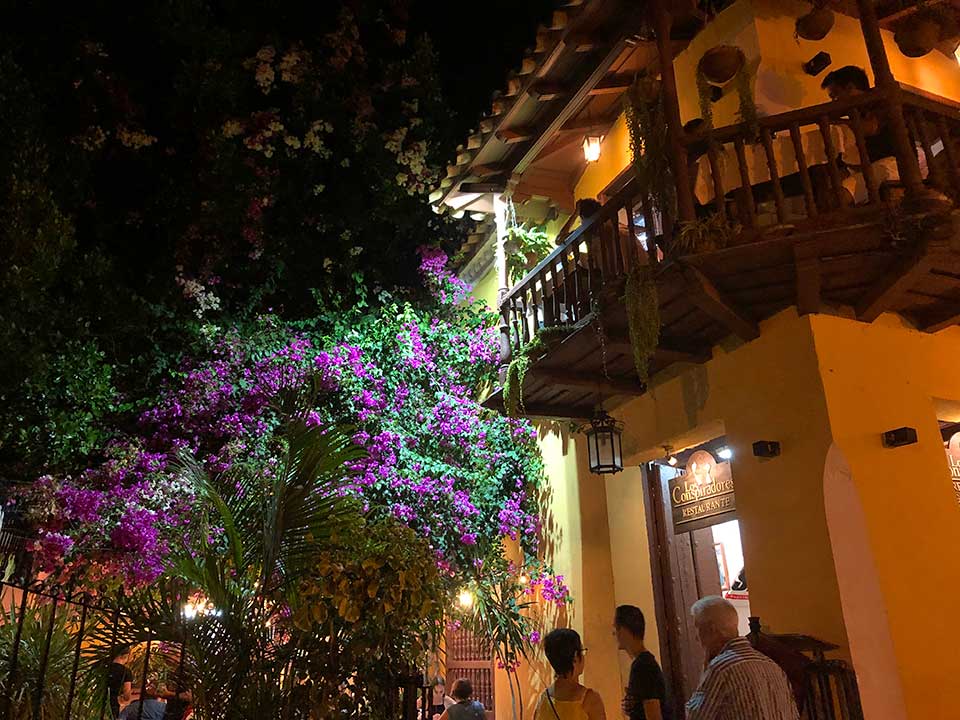
Well rested, the next morning after breakfast we visited the Museo Romántico in the restored Palacio Brunet mansion. This beautiful museum was the former home of a 19th Century Sugar Baron, and contained period pieces collected from all over Cuba. Rare objects on display included: a bed made of bronze and mother of pearl, an antique French wardrobe, a desk belonging to Maria Theresa of Austria, and fine China, porcelain, and crystal belonging to some of the wealthiest families from the Romantic period (early 1800’s) of Cuba.
We also saw the house slave entrance and slave quarters. It was hard to wrap our heads around what it must have been like to live there as aristocrats in the heyday… or as slaves.

After the Romantic Museum, we planned a walking tour of the main square, but black clouds were looming and rain was imminent. Before we knew it, it was pouring rain and all of the tourists were scampering for cover as the cobblestoned streets instantly turned into rushing rivers. Bel herded us into an art gallery where we hung out for about 30-minutes viewing modern Cuban Pop Art while waiting for the monsoon downpour to stop. This unplanned visit turned out to be one of our highlights of Trinidad!
Once the rain had stopped and the cobblestone street “rivers” had subsided, we met up with Gustavo, as it was already time for our next road-trip. We now had a five-hour drive back to Havana for one overnight before taking off early the next morning in the opposite direction for Viñales. So much to see, so little time. We only had three days left! We always seem to vacation (and maybe live life?) go-go-go, trying to pack it all in.

Back in Havana for the night, we stayed in another Casa Particular in a different part of town near many of the international Embassies, (most of which–except the US–are housed in old colonial mansions.) We had rented a 3-bedroom/2-bath apartment for four nights, even though we’d be staying the second night in Viñales. This enabled us to leave most of our luggage behind, and travel light taking only overnight bags to Viñales.
Our hosts recommended eating dinner at Havana Blues, a unique, artsy restaurant based on the movie Havana Blues available on Netflix, we still need to check it out! The concept is interesting with local Cuban artists of all kinds (actors, singers, musicians, etc.) working there and performing as they serve you. Not quite dinner theater, but sort of? It’s complicated! At any rate, the food was quite good, the prices pretty reasonable, and the decor fun and different in each room.
Next morning we hit the road early with Bel and Gustavo for our trip to Viñales. Check out Cuban Time Travel, Part 4: Valle de Viñales, for the rest of our Cuban adventures and tips for planning your own visit to Cuba.

